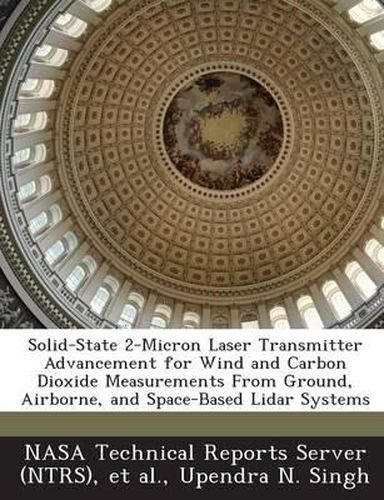Readings Newsletter
Become a Readings Member to make your shopping experience even easier.
Sign in or sign up for free!
You’re not far away from qualifying for FREE standard shipping within Australia
You’ve qualified for FREE standard shipping within Australia
The cart is loading…






NASA Langley Research Center has been developing 2-micron lidar technologies over a decade for wind measurements, utilizing coherent Doppler wind lidar technique and carbon dioxide measurements, utilizing Differential Absorption Lidar (DIAL) technique. Significant advancements have been made towards developing state-of-the-art technologies towards laser transmitters, detectors, and receiver systems. These efforts have led to the development of solid-state lasers with high pulse energy, tunablility, wavelength-stability, and double-pulsed operation. This paper will present a review of these technological developments along with examples of high resolution wind and high precision CO2 DIAL measurements in the atmosphere. Plans for the development of compact high power lasers for applications in airborne and future space platforms for wind and regional to global scale measurement of atmospheric CO2 will also be discussed.
$9.00 standard shipping within Australia
FREE standard shipping within Australia for orders over $100.00
Express & International shipping calculated at checkout
NASA Langley Research Center has been developing 2-micron lidar technologies over a decade for wind measurements, utilizing coherent Doppler wind lidar technique and carbon dioxide measurements, utilizing Differential Absorption Lidar (DIAL) technique. Significant advancements have been made towards developing state-of-the-art technologies towards laser transmitters, detectors, and receiver systems. These efforts have led to the development of solid-state lasers with high pulse energy, tunablility, wavelength-stability, and double-pulsed operation. This paper will present a review of these technological developments along with examples of high resolution wind and high precision CO2 DIAL measurements in the atmosphere. Plans for the development of compact high power lasers for applications in airborne and future space platforms for wind and regional to global scale measurement of atmospheric CO2 will also be discussed.